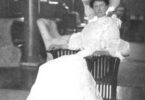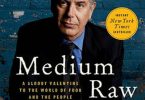
Who is Octavia Butler?
Butler was born in Pasadena, California, on June 22, 1947. She became a pioneering African-American science fiction author and is considered the mother of Afro-futurism. In her lifetime, Butler published a dozen novels and many short stories.
When she began publishing in the 1970s, white male authors dominated the science fiction genre. Butler’s talent challenged the status quo and she became the first Black woman to receive both the Nebula and Hugo Awards and the first science fiction author to be granted a MacArthur ‘Genius Grant’ fellowship.
Butler’s father died when she was seven and she was raised by her mother and grandmother in a strict Baptist household, giving her a Biblical foundation she would later use in her stories. Dyslexia made school hard for her and her very tall stature (she grew 6 feet tall by the time she was fifteen) made the already reserved Butler even shyer.
Why did Octavia Butler become a writer?
A seemingly mundane event in her early years compelled Octavia Butler to pursue her life’s work of writing. At 12, she watched a trashy sci-fi movie, “Devil Girl from Mars,” and had a revelation – someone got paid to write the awful film. Butler knew she could write a better story; from then on, she resolved to be an author.
After graduating from John Muir High School in 1965 she attended Pasadena City College at night while working odd jobs, including inspecting potato chips, washing dishes, and working as a telemarketer during the day. As a freshman, she won a short-story contest and began what would become her best-selling novel Kindred. She graduated with an Associate’s degree in 1968 and went on to study writing through extension courses at UCLA and attending writing workshops. She was still working daytime jobs and often woke up at 2 am to write before work. She would spend her free time writing at the Central Library in Los Angeles, where they now have a DIY lab called Octavia Lab.
In 1971, she sold her first two short stories to a writer-editor at a science fiction writer’s workshop. “Childfinder” was published, but the other wasn’t.
It would be five more years until Butler was published again, but by the mid-70s her first novel, Patternmaster (1976) was published, and she followed it up with more books in the Patternmaster Series: Mind of my Mind (1977), Survivor (1978), Wild Seed (1980) and Clay’s Ark (1984).

In between Butler released a novel she had been working on since college, Kindred (1979) and it became her breakout book. Although often shelved in the science fiction section, Butler herself pointed out the story contains no ‘science.’ The time-travel narrative follows Dana, a 20th-century Black woman living in California who is transported back to pre-Civil war era slavery in Maryland to save her white ancestor and preserve her family line. Butler received a $5,000 advance for the novel and could quit the odd jobs she had been working and focus on her writing career.
In May 1989 she outlined her path to becoming a writer for Essence magazine. The piece “Birth of a Writer” was later collected in Bloodchild and Other Stories (1996) as “Positive Obsession.”
“Who was I anyway? Why should anyone pay attention to what I had to say? Did I have anything to say? I was writing science fiction and fantasy, for God’s sake. At that time nearly all professional science-fiction writers were white men. As much as I loved science fiction and fantasy, what was I doing? Well, whatever it was, I couldn’t stop. Positive obsession is about not being able to stop just because you’re afraid and full of doubts. Positive obsession is dangerous. It’s about not being able to stop at all.”
Octavia Butler from Bloodchild and Other Stories
Was Octavia Butler married?
Considering herself a hermit, Butler lived a solitary life. She never learned to drive or married. After her mother died, she moved from Los Angeles to Seattle, a move similar to characters in her Dystopian novels Parable of the Sower (1993) and Parable of the Talents (1998), who fled North up the west coast from Southern California.

In 1995 Butler said of herself “I’m a 48-year-old writer who can remember being a 10-year-old writer and who expects someday to be an 80-year-old writer. I’m also comfortably asocial — a hermit in the middle of Los Angeles — a pessimist if I’m not careful, a feminist, a Black, a former Baptist, an oil-and-water combination of ambition, laziness, insecurity, certainty, and drive.” Unfortunately for the world, Butler didn’t get to live to be an 80-year-old writer.
How did Octavia Butler die?
Octavia Butler died on February 24, 2006, at her home in Lake Forest Park, a suburb of Seattle. Although she had multiple health issues, her cause of death was never fully established
The Huntington Library in Pasadena, California houses Butler’s collection of papers, including a commonplace book where she wrote motivational notes to herself such as:
“This is my life. I write bestselling novels. My novels go onto the bestseller lists on or shortly after publication. My novels each travel up to the top of the bestseller lists and they reach the top and they stay on top for months. Each of my novels does this. So be it! I will find the way to do this. . . .”
Grand Central Publishing, a division of Hachette Book Group, has reissued beautiful editions of Butler’s books for a contemporary audience. They summarize the importance of Butler’s work on their website: “Sales of her books have increased enormously since her death as the issues she addressed in her Afrofuturistic, feminist novels, and short fiction have only become more relevant.”
In 2020, Butler’s 1993 novel Parable of the Sower reached the New York Times Best Seller list for paperbacks, fourteen years after her passing.
Novels by Octavia Butler
The Patternmaster Series:
Patternmaster is Octavia Butler’s first published novel. It is the fourth book chronologically in Butler’s Patternmaster series. Wild Seed (1980), Mind of my Mind (1977), and Clay’s Ark (1984) follow. Another novel, Survivor (1978), was part of the series, but Butler later disowned the novel and declined to have it reprinted.
Patternmaster
Mind of my Mind
Survivor
Wild Seed
Clay’s Ark
Seed to Harvest
Xenogenesis Trilogy:
Butler’s late 1980s novels Dawn, Adulthood Rites, and Imago were published as an omnibus edition by Guild America books in 1989 under the title Xenogenesis. In 2000 the omnibus was reissued by Warner under the title Lilith’s Brood.
Xenogenesis & Lilith’s Brood
Dawn
Adulthood Rites
Imago
The Earthseed Series:
In 1989 Butler set out to write Parable of the Sower (1993), the first book of the Earthseed Series. It was a planned trilogy, but she only finished one other book, Parable of the Talents (1998), which won the Nebula Award for Best Novel.
Parable of the Sower
Parable of the Talents
Standalone novels:
Kindred
Fledgling
Short story collections by Octavia Butler:
Bloodchild and Other Stories
Unexpected Stories
Other Works on Butler:
Octavia E. Butler: Kindred, Fledgling, Collected Stories
A Handful of Earth, a Handful of Sky: The World of Octavia Butler
Amy C. Manikowski is a writer living in Asheville, NC.






